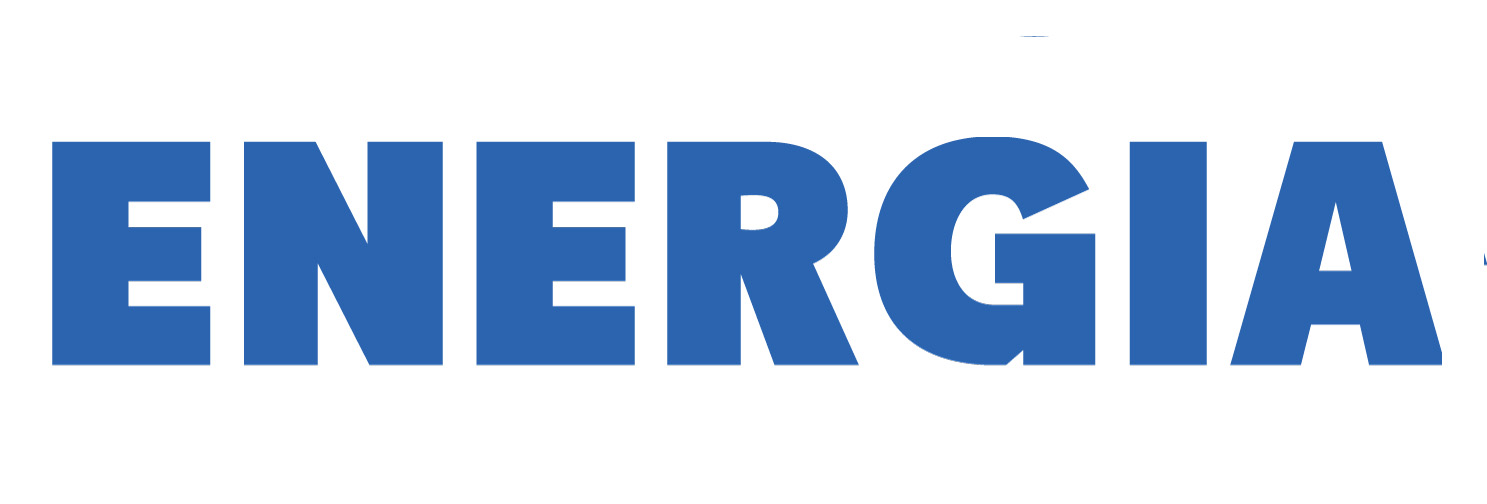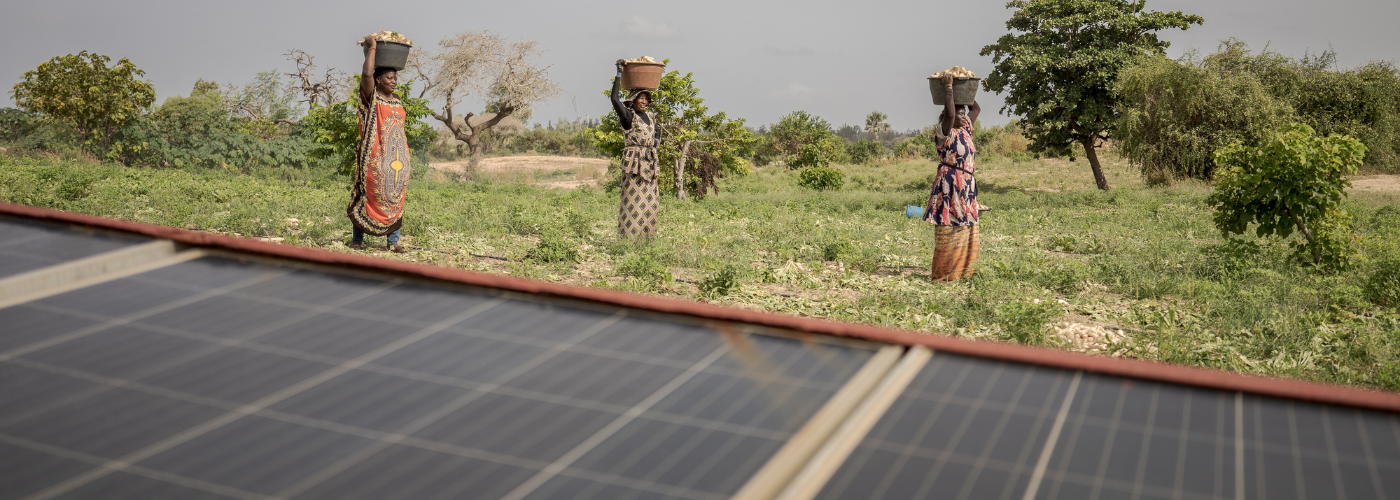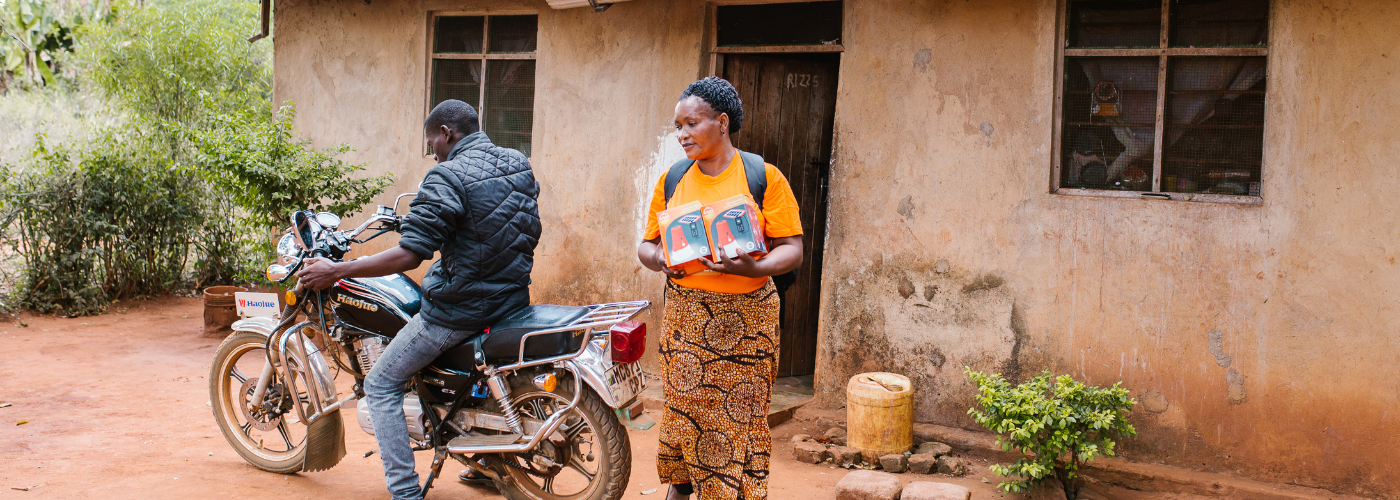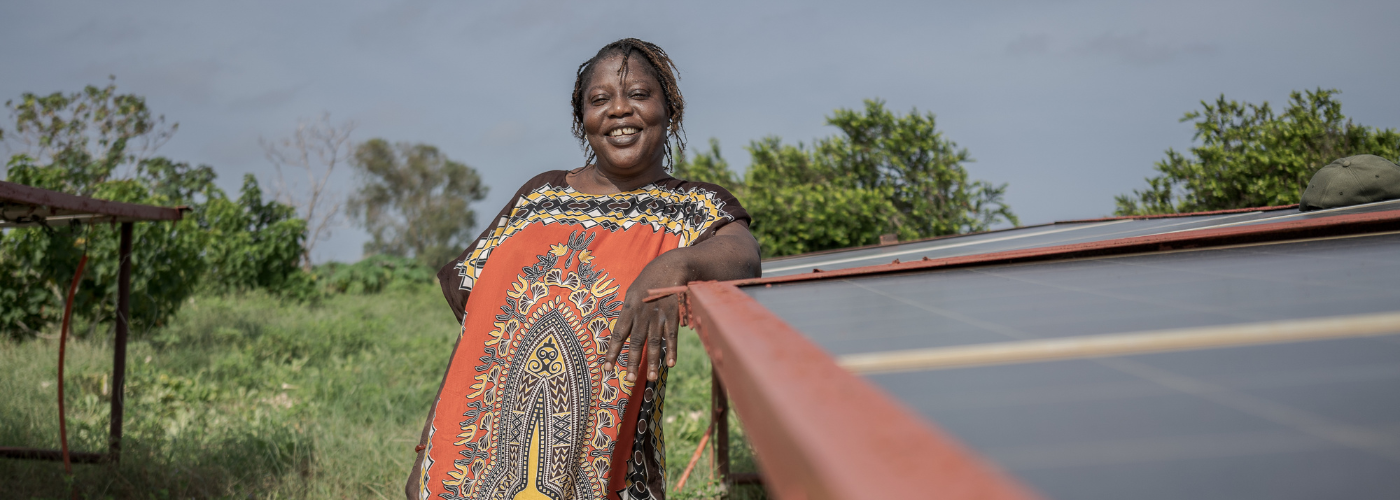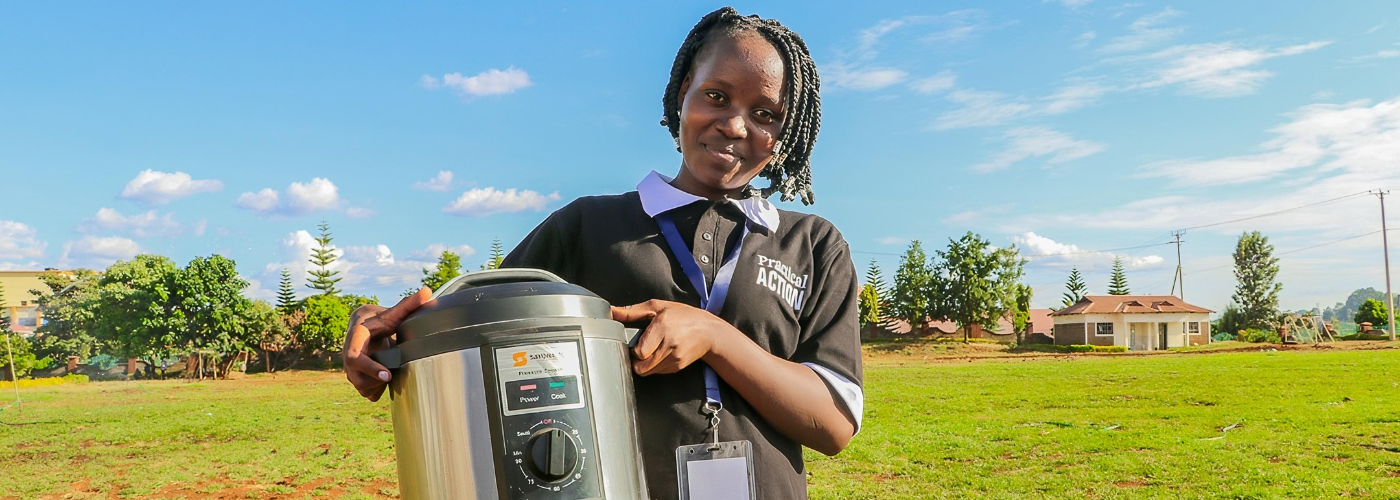By Elizabeth Cecelski, Senior Technical Adviser ENERGIA, on behalf of the co-convenors of the Gender and Energy Compact** – ENERGIA, GWNET, UNIDO, SE4ALL – and UN Women
With only six years remaining until the 2030 deadline for the Sustainable Development Goals (SDGs), progress has been too slow, especially on gender equality, according to UN Women’s recent Gender Snapshot 2024. At present, SDG 7 on sustainable energy is one of only six SDGs that lack a specific gender indicator, even though the two are closely interlinked. At the same time, energy access and affordability is one of six investment priorities identified by the United Nations for revitalizing SDG implementation. We can correct this gap in the post-2030 energy framework. To do so, we need to start working in a collaborative and inclusive effort now.
Unlike 2015, when The 2030 Agenda for Sustainable Development was adopted, the UN custodian agencies for collecting data and tracking SDG 7 indicators – the International Energy Agency (IEA), International Renewable Energy Agency (IRENA), United Nations Statistics Division (UNSD), World Bank, and the World Health Organization (WHO) – now have the competence and experience of collecting data on gender and reporting to member states in a way that informs inter-governmental processes. This is a good starting point. But work still needs to be done by the gender and energy community and champion Member States to agree on indicators and to be prepared with evidence. We must not miss important milestones such as the 2025 review of SDG 5 at the High-Level Political Forum.
We call on the SDG 7 data custodian UN agencies to take the lead and start exploring the possibility of including stronger gender data points in tracking SDG 7 in the 2025 Energy Progress Report.
Key areas where progress should be measured
To close this gap, we need a clear path ahead to our vision of prioritizing gender indicators in a post-2030 energy framework. We started this journey in 2022, when the UNDESA multi-stakeholder SDG 7 Technical Advisory Group included data interlinkages between SDG 5 and SDG 7 in the SDG7 TAG Policy Brief: Addressing Energy’s Interlinkages with Other SDGs, its
Report to the High-Level Political Forum. Development of the gender chapter of the policy brief was led by ENERGIA, based on consultations with a wide range of data custodians and stakeholders, including the IEA, UNIDO, UN Statistics, UN Women, WHO, and the World Bank, who reviewed and supported this work. The report recognized that access to affordable, sustainable, and clean energy is a precondition for the achievement of SDG 5 on gender equality and SDG 7 on energy. Yet, gender inequalities in energy are substantial in four key areas where progress made in closing gaps needs to be measured.
The first step was to identify which gender gaps in the sustainable energy transition need to be measured and closed. Which indicators would be most relevant to the ongoing political narrative around gender and energy?
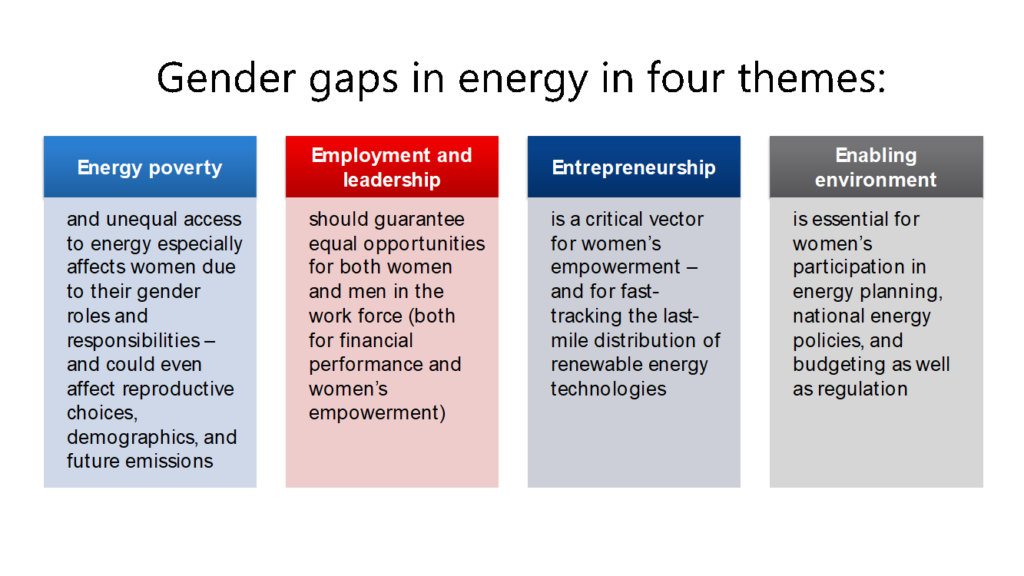
The first theme identified is energy poverty – via time spent in domestic chores and unpaid care, limiting access to education and employment; exposure to health risks, especially indoor air pollution; exclusion from new digital technologies; and lower productivity in women’s businesses and farms.
The second theme is employment and leadership. This is a two-way relationship: On the one hand, gender diversity has been shown to deliver both higher effectiveness and better financial performance in businesses. And on the other hand, access to quality jobs and finance are key levers of empowerment for women and their families.
The third theme is entrepreneurship, a critical vector, both for women’s empowerment, and for fast-tracking the last-mile distribution of renewable energy technologies.
And finally, the enabling environment for energy planning, policy, budgeting and regulation, where women’s participation lags considerably.
A key finding of this narrative, that is well-supported by evidence, is that closing these gender gaps is essential not only for promoting gender equality, but also for the achievement of the sustainable energy targets in SDG 7. The Policy Brief goes on to develop gender targets and indicators for SDG7, using SDG5 and SDG7 targets as a starting point.
Aligning new gender indicators with SDG 5 and SDG 7 targets
The Report looked then at how gender indicators in SDG 7 could be aligned with targets and indicators in SDG 5. For example, indicators 5.1 and 5C on legal frameworks, policies and legislation, and 5.5 on ensuring full participation in leadership and decision-making are equally needed in the energy sector. We were able to use specific language from SDG 5 targets and indicators in most of the proposed gender indicators for SDG 7.
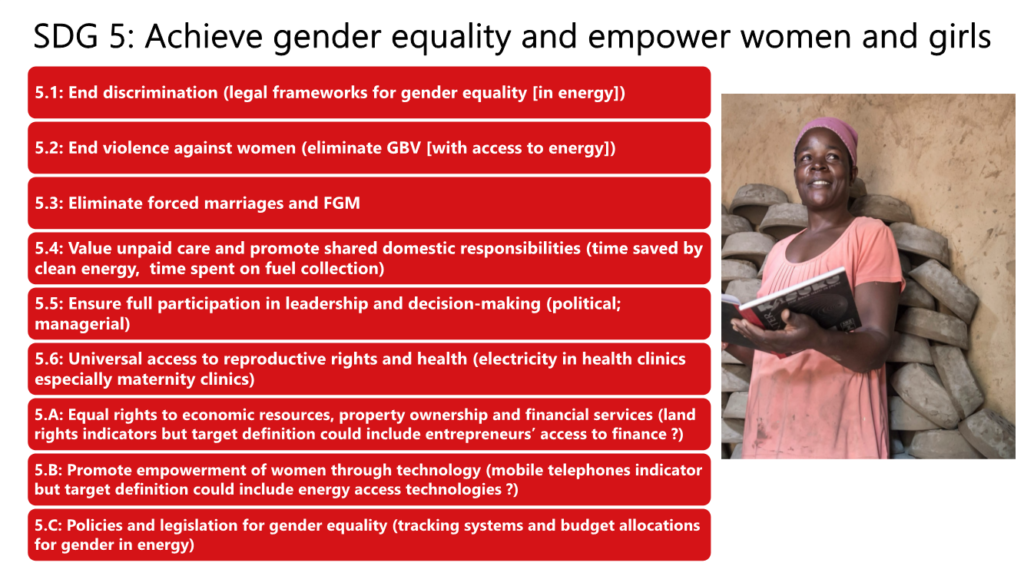
Of course, the Report also looked at how to align proposed new gender indicators with the current SDG 7 targets and indicators. The most obvious fit is with target 7.1: Ensure universal access to affordable, reliable and modern energy services. Here, access to electricity and access to clean cooking fuels could be sex-disaggregated.
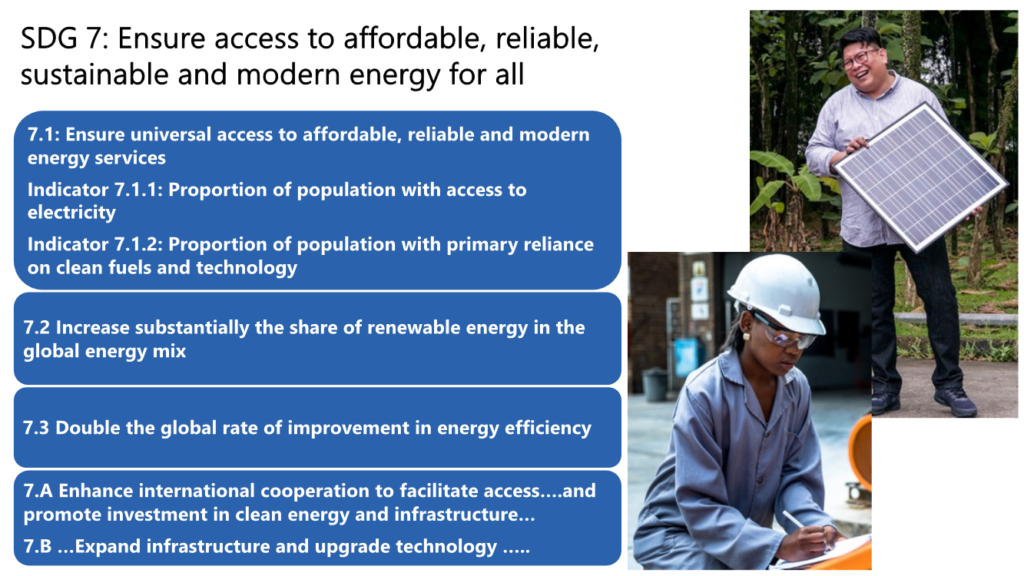
Today’s gender data availability and collection capacity
Custodian agencies for data for each of the SDG 7 indicators were consulted on the feasibility of data collection of gender indicators. The World Bank is data custodian for 7.1 on access to electricity, and WHO for 7.2 on cooking fuels. UN Statistics, IRENA, and IEA are custodian agencies for other indicators. All of these custodian agencies have greatly expanded their gender data collection in recent years, working with country National Statistics Offices. For example, IEA has launched a Gender and Energy Data Explorer, and the World Bank has added more than 100 gender indicators to their RISE data collection efforts. The latest annual review of Renewable Energy and Jobs by IRENA and ILO reports that women are already 38% of the workforce across all roles in Africa’s solar PV industry. UN Women is developing indicators on the nexus between gender and environment through a model questionnaire, where a module on energy could be added. There is so much more gender data and capacity for gender data collection and analysis available today, at both international and national levels, than there was when The 2030 Agenda for Sustainable Development was adopted in 2015. Now we can do so much more!
Eleven possible gender-energy indicators were proposed by the Expert Group that prepared the Gender chapter in the Report by the SDG 7 Technical Advisory Group. The selection tried to balance the aspiration for the most relevant and comprehensive indicators, with the realistic availability and sustainability of data collection in national statistics and global initiatives. Of course, most likely only one or two of these indicators can be added to the sustainable energy framework, so priority indicators need to be selected.
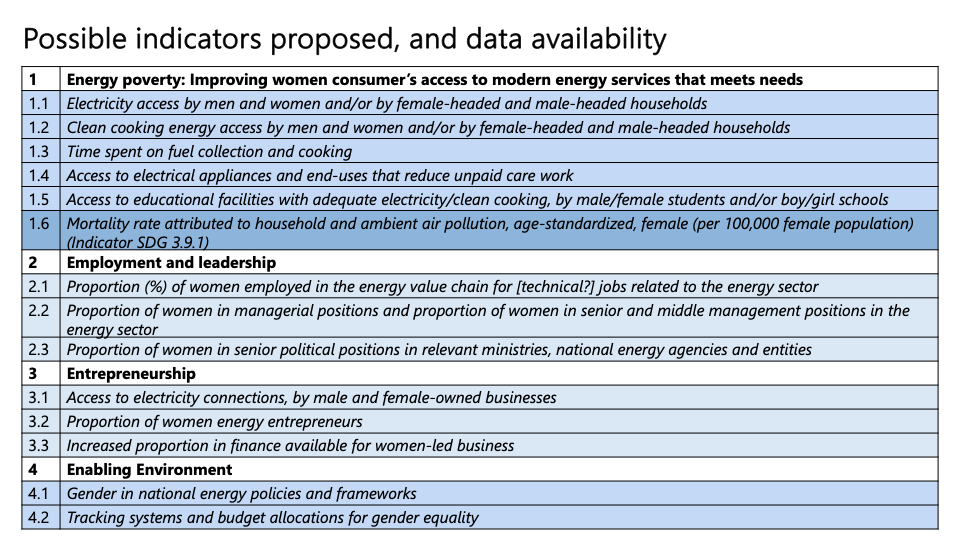
Proposed gender indicators for a post-2030 energy framework
The Report prioritized three indicators initially: Two indicators disaggregating energy access to electricity and clean cooking fuels under Theme 1 Energy Poverty, and one indicator under Theme 4 Enabling Environment, on the inclusion of gender in national energy policies.
Under Theme 1 Energy poverty, the first two indicators 1.1 on access to electricity and 1.2 on clean cooking fuels could be engendered as: The proportion of women, or female-headed households, with access to electricity/clean cooking fuels, to be equal to the proportion of men, or male-headed households, with access. The Oxford Poverty and Human Development Initiative (OPHI) Global Multidimensional Poverty Index (MPI) of over 100 developing countries, tells us that it may be possible to extrapolate this from existing Demographic and Health Surveys, Multiple Indicator Cluster Surveys and other household surveys.
A third indicator, the inclusion of gender in national energy policies and frameworks was also proposed from Theme 3 Enabling environment, aligning with similar SDG 5 indicators. Data on the inclusion of gender in national energy policies and frameworks has been collected by an often-cited IUCN/ENERGIA study and also in ESMAP’s RISE database. A target of 100% was proposed.
Other gender indicators are important to aspire to measure the multi-faceted progress needed on gender and energy but have less data availability. For a limited number of countries, indicator 1.3: Time spent on fuel collection and cooking is already being collected under the World Bank’s Multi-Tier Framework and RISE programs, and so is the proportion of households with lighting in the kitchen, which could be a proxy for 1.4 access to appliances and end-uses that reduce unpaid care work. There is also one indicator under Energy Access which is already included under SDG 3 on health: 1.6 the mortality rate attributed to household and ambient air pollution for female and male.
Under Theme 2 Employment and leadership, there has already been some collection of employment data by IRENA and ESMAP, and IEA is collecting on wage gaps and senior managers. ILOSTAT, the ILO Economic Activity Index, does disaggregate by sex, though limited in its energy sector definitions. Data limitations are severe for Theme 3 on women’s entrepreneurship, but IEA is making strides in collecting gender data on start-ups and on patents and inventors.
In fact, most of the proposed indicators do face a continuum of data issues and decisions about how to move forward with data collection in the future. Women’s invisibility in data is of course a known issue, and further work is needed on methodology and coverage. Technical consultation among the data custodians is needed to reach a consensus on which gender indicators to prioritize and advocate for.
Creating a platform to advance coordination: Technical input and advocacy
Recognizing all the gender and energy data collection initiatives that are moving forward rapidly, the SDG 7 TAG Policy Brief recommended the establishment of a platform and partnerships to prioritize indicators and areas for coordination on data collection on gender and energy. Such a group could identify next steps in methodology development and refinement of indicators, political buy-in for the indicators, and communication to governments and other stakeholders on the urgency of data collection on gender and energy, as well as progress reporting on an annual basis.
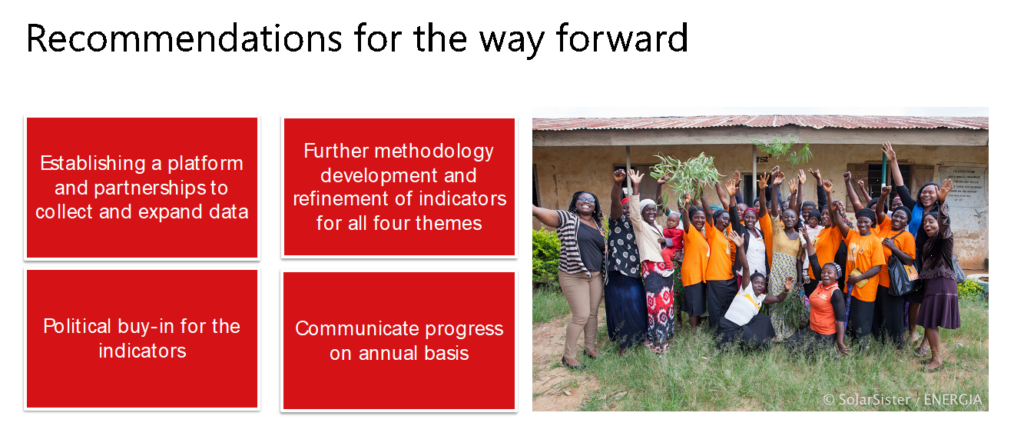
Improving gender data in the energy sector is all about making women more visible in sustainable energy and expanding the gender lens on energy data collection. A gender-just and inclusive energy transition will not only help the energy sector to promote gender equality. It is also essential to achieving the SDG 7 targets.
* ENERGYNOW SDG 7 Action Forum 2024: 25-27 September 2024.
** The Gender and Energy Compact is a global, multi-stakeholder coalition that joins forces to catalyze action towards gender equality and women’s empowerment to accelerate a just, inclusive and sustainable energy transition.
